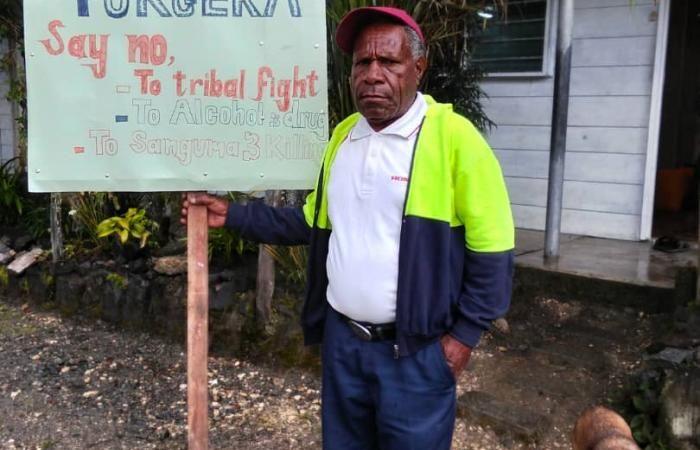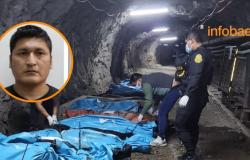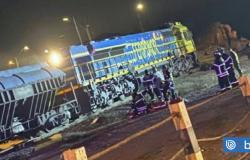De P. Giorgio Licini *
It was supposed to be a land of promise for those who had always lived from subsistence agriculture and found access to modern education and health thanks to the labor provided by the mine. But the expiration of the license and a vicious circle of tribal struggles planted death and desolation. Now, the Papua New Guinea government has negotiated reopening. But with many unknowns about the future.
DECE (ASIANEWS) – PAIAM’s suburb is located at the entrance of the Porgera Valley, at 2,500 meters above sea level, in the remote province of deceive, in Papua New Guinea. He grew at the end of the 1990s to accommodate the growing number of national personnel who worked in the gold mine that was opened in 1990. He endowed with a police station, a post office, a bank and an international school. The Catholic Church hastened to open the new Blessed Peter To Rot parish in 2002. Now, the few people left in the place point to the four completely abandoned residential villages, the church almost empty and the modern hospital, which will hope will reopen soon, but it is still closed. People are gone. The mine stopped working between 2020 and early 2024. In those same years, the local population around Paiam entered a vicious circle of tribal struggles that frightened everyone. Not only did the mining villages looted, but also the houses and businesses of the members of the local clans were burned.
Now, with the reopening of the Porgera mine under a new agreement between the government and mining companies, it seems that the desire for tribal peace has come true with a gradual return of residents. But years will pass until Paiam is the same vibrant place that could still be seen in 2019. The tribal struggle that caused such devastation, something common in deceive, was simply because of the economic benefits and participations in the canon of a telecommunications antenna between real and assumptions of the area. As soon as the first murders occurred, the retaliation cycle became unstoppable. With an indescribable sadness in the eyes, a group of young people told me, after the Mass of Holy Thursday, the frightening murder of his church leader a few years ago.
The Porgera Valley was going to be a land of promise. The first flood gold was identified in 1938. Christianity was not established in this remote Papua New Guinea area until the second half of the last century. The missionaries of the Society of the Divine Word (SVD) founded the first Catholic parish in the town of Mungulep in 1966. The gold and silver mine was opened in 1990 with a 30 -year -old government license. The project has had reasonable benefits for the interested parties of Papua New Guinea (the National Government, the population of the area, the province of deceive and the country as a whole). In a generation, several thousand people, who had always lived from subsistence agriculture, had access to modern education and health, to a monetary economy and the perception of mining canons. The ancestral lands and orchards gave way to open -pit mining, mineral processing plants, roads and fuel deposits, and paid employment; And young people learned totally new things from traditional agricultural techniques. The stores, instead of the orchards, began to provide food. Everything followed, until the temporary closure of the mine when the mining license in 2020 and the simultaneous outbreak of tribal struggles in Paiam expired.
That year, the National Government of Marape-Rred, with the political motto we recover Papua New Guinea, decided to substantially renegotiate the mining agreement. The objective of the government was to guarantee a 51%participation to the interested parties of Papua New Guinea, basically the national government (36%), the provincial government (5%) and the landowners (10%). This was expected to provide total income of more than 7,000 million dollars throughout the 20 years of estimated life of the mine, about 30,000 million crowns according to the fluctuation of the local currency. In turn, around 49% of the so -called New Porgera Limited is owned by Barrick Niugini Limited, which is in turn a joint company by Canadian Barrick Gold and China Zijin Mining. Barrick explodes the mine since he acquired it at pleasure Dome almost two decades ago, in 2006. Porgera is considered one of the ten most important gold mines in the world, supplies 10% of the national exports of Papua New Guinea and gives work to some 3,000 national employees.
During the first years of Barrick, the Canadian and international media reported a deterioration of the company’s relations with the local population. In 2010, Barrick compensated 119 survivors of sexual assaults of their security guards to residents (“Mining #7 – Barrick and the cruelty of gold”). The current reopening of the mine was accompanied by a considerable level of violence that, although it was not Barrick’s fault, required police intervention with army reinforcements by the government. The three years of closing had deprived the local population of work opportunities and family income, throwing thousands of people into poverty after decades of relatively comfortable conditions. One of the consequences of closing was the increase in flood mining and illegal practices, including illegal entry into the special mining lease area.
Mine workers confirm that illegal entries continue to be produced in the mining area. Often, and running a considerable risk in relation to the explosions of dynamite of the mine, young people rush into the well area before safety guards can intervene with tear gas and prevent any amount of mineral from taking. Recently deaths have been recorded over this type of activity. Incidents between flood miners who face and steal from each other before reaching the gold buyers of the city, or between local and outsider landowners who are installed in the mining area in the hope of hopeing to get part of the benefits are also produced. According to the locals, lives are lost almost daily. Flood mining is not a small business and, outside the special mining lease area, is legal and practiced widely. The fundamental error of the government and the company was not to adequately resettle the residents, as usual, far from the possible mining location, thus mitigating health and safety risks.
The new agreement to reopen the mine in December 2023 is a good omen for landowners if the level of violence and anarchy is constantly contained and possibly eliminated. The population of the community has increased considerably in the years elapsed since the opening of the mine, so the individual part of the financial benefits available under the new agreement is reduced, but remains significant in certain conditions. The first is, of course, that the benefits are properly managed with collective or individual accounts of the owners, despite the chronic risks of corruption and poor management. The second is that the benefits are used properly, for example, mainly allocating them to the schooling of younger generations.
The closure of the mine and the exodus caused by tribal confrontations in Paiam have caused serious damage to education. Gone are the years of the great efforts of the governor of DEC, Peter Ipatas, for taking as a possible number of young people to university studies through a free education program, held largely for his actions in the Porgera mine. Terratenientes, with little training, also need financial knowledge to be able to allocate the benefits of the mine to profitable investments for the community and the family. Otherwise, everything is immediately dilapidated, as is usually the case with the income of those who are dedicated to alluvial mining. A different and better management of financial benefits would also reduce alcohol abuse and illicit substances, also cause of violence in the city of Porgera.
In addition, since the remaining useful life of the mine is estimated in just 20 years, the land owners have to think about what will happen for them and for the Porgera valley. It is very difficult to make predictions in such a remote area, about 650 km from the nearest port of Lae, in an apparently inadequate area for any type of alternative development or investment, largely devastated by the massive extraction of mineral and the spill of large -scale waste, and whose population presumably flees as soon as the jobs and income are exhausted.
All probability, the jungle will claim every centimeter of land and bury everything again in a perpetual oblivion.
* Responsible for incidence of Caritas Papua New Guinea






